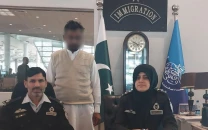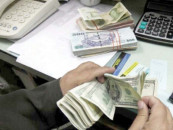Pakistan’s airstrikes in Afghanistan — the aftermath
Urgency and seriousness of the matter demands situational appreciation, policy formulation and implementation

On 16 March 2024, a multiple suicide truck bomb and gun attack carried out by militants linked with TTP’s Hafiz Gul Bahadur Group, in the Khaddi Market area at a Frontier Corps (FC) base in North Waziristan border district (NWD), was the latest in a string of TTP-IEA linked and inspired attacks in Pakistan. This attack resulted in the death of troops including two officers and partial demolition of the post. Civil, military leaders during the funeral of the martyred officers on Sunday resolved to retaliate, and Pakistan’s response was imminent.
Last year, more than 650 attacks were launched by TTP and its affiliates across Pakistan, causing over 1,000 deaths, mostly of security personnel. Over 93 per cent of these attacks occurred in KP and Balochistan, substantiating cross-border support to these armed groups, who use Afghan soil as safe-haven, and are patronised from within certain…not ‘all’ elements of the IEA. Pakistan has consistently shared relevant intelligence with IEA, which is unable or unwilling or both, to restrict the use of Afghan soil against brotherly Muslim Pakistan and restrain TTP militants into a life of quietude in the Afghan countryside. This leaves limited options with Pakistan that has stood with Afghans through thick and thin. Pakistan must protect its citizenry and strategic interests.
So, on 18 March, in intelligence-based anti-terrorist operations in NWD, one of the masterminds, Sehra aka Janan, involved in the FC attack, was killed besides other terrorists. And in the wee hours, Pakistan launched airstrikes in Paktika and Khowst provinces of Afghanistan, targeting TTP. Unlike the past air operations inside Afghanistan, especially in April 2022, Pakistan officially acknowledged striking Afghan border havens.
The Afghan analyst network is in overdrive to paint the situation into an essentially anti-Pakistan light, with some within Pakistan in cahoots. However, the urgency and seriousness of the matter demands clear-eyed and clear-headed situational appreciation, and policy formulation and implementation.
Firstly, the fact that anti-Pakistan TTP groups, most notably the Hafiz Gul Bahadur Group, are comfortably lodged on the Afghanistan side of NWD and South Waziristan, is no secret. And these groups enjoy IEA’s hospitality and its moral, political, military and logistic support. If not the entire IEA, at least an influential portion of it, under the patronage of the Qandahari puritans. And they have access to sophisticated weaponry, left by the retreating Coalition Forces in 2021, and now under control of IEA Forces.
Secondly, because of the potential split that TTP causes within the IEA, Afghan Interim Government cannot and will not take any ‘potent’ action against these terrorists. IEA will continue to support negotiations as a terminal strategy. And for Pakistan, such a route is ridden with risks as seen after the collapse of the botched negotiations in 2022 in Kabul under the good offices of Haqqanis.
Thirdly, a policy of firm-handling, under synergy of leverages (plentiful); humanitarian restraint, and de-escalation has worked well vis-à-vis Afghanistan in the past, when Pakistan bombed Afghan territory in September 1961 during the Bajaur Campaign. Then…hostilities broke out, when Afghan Prime Minister Daoud Khan, a vocal supporter of Pashtunistan and opponent of the Durand Line, sent Royal Afghan Army backed up with Afghan lashkars in 1960-61 to occupy strategic regions in Bajaur Agency. The PAF’s F-86 Sabre jets targeted Afghan Army positions in Kunar province inside Afghanistan, forcing a retreat. Afghanistan had then deployed tanks and artillery along our Western border.
Fourthly, militarily IEA is faced with operational vulnerabilities. A resurgent IS-K; TTP a force-in-being, able and willing to interfere and influence Afghanistan’s domestic politics (due to its wartime camaraderie with Afghan forces, its combat potential, its recruitment, and the fear of it joining the IS-K); a latent insurgency in the northern Afghanistan; lack of IEA’s alliances and support due to non-recognition; and Afghanistan’s not so robust economy. Afghanistan like in the past will not pursue open and sustained hostilities with Pakistan, except border shelling (as continues), and the use of TTP proxies inside Pakistan.
Following on from the above essential background, the suggested contours of entailing policy should be as follows.
One, staying the course. Pakistan should continue to demonstrate its resolve militarily through IBOs and strikes, as possible and necessary...without making noise and under any ‘possible’ tacit arrangements with elements within the Emirate. The IEA is not a monolith and there are sympathetic voices within the interim Afghan political dispensation…who a) understand Pakistan’s predicament, b) do not agree with the puritan Qandahar, c) realise the negative potential of TTP (its ability to obviate IEA control over the entire Afghan territory and the potential split with Pakistan…IEA’s only ‘indispensable’ interlocutor), and d) want to get rid of TTP, a legacy issue to focus on governance, economy and IS-K. It is instructive to realise that Pakistan’s sustained pressure divides IEA, to Pakistan’s advantage.
Two, continue with ‘religious diplomacy’. Using the good offices of JUI — all factions — especially the Darul Uloom Haqqania in Akora Khattak, KP and other seminaries all over Pakistan, in order to plead Pakistan’s case in a sustained manner with the Amir-ul-Momineen, the venerable Moulvi Haibatullah Akhundzada, and his inner circle.
Three, diplomatically, avoid statements and briefs. Sometimes keeping quiet and pursuing a course of action quietly helps yield results.
Four, sociologically and in the media, pursue a narrative that builds on Pakistan’s goodwill towards Afghans and Afghanistan historically, with “Islamabad always offering humanitarian aid and other possible help; whereas ‘certain Afghans’ continue to demonstrate recalcitrance and inability or unwillingness to return Pakistan’s favour, violating Pashtunwali’s bedrock tenet shegara (favour), and other Islamic fraternal obligations.” Continue to remind the Afghan brethren the folly and short-sightedness of following an anti-Pakistan policy, focusing on TTP, as a single-point agenda.
Five, hold the nerve. Afghanistan is not Iran, and Pakistan is not the infidel foreign occupation force, with lackluster interest in the region. Pakistan above all has a ‘just cause’ like IEA did while fighting the foreign forces. There is no reason to go for appeasement, quick de-escalation, and other ill-thought measures under the influence of this or that lobby. Pakistan’s strategic dividend, temporarily suspended, will be restored.
We must have the belief that just like Afghans prevailed in their decades-long struggle against the occupation forces with the help of Pakistan and their just cause, so would Pakistan against the proponents of hostility in Pak-Afghan bilateralism. This essentially is transient tarboorwali — the cousin rivalry!
Published in The Express Tribune, March 21st, 2024.
Like Opinion & Editorial on Facebook, follow @ETOpEd on Twitter to receive all updates on all our daily pieces.














COMMENTS
Comments are moderated and generally will be posted if they are on-topic and not abusive.
For more information, please see our Comments FAQ